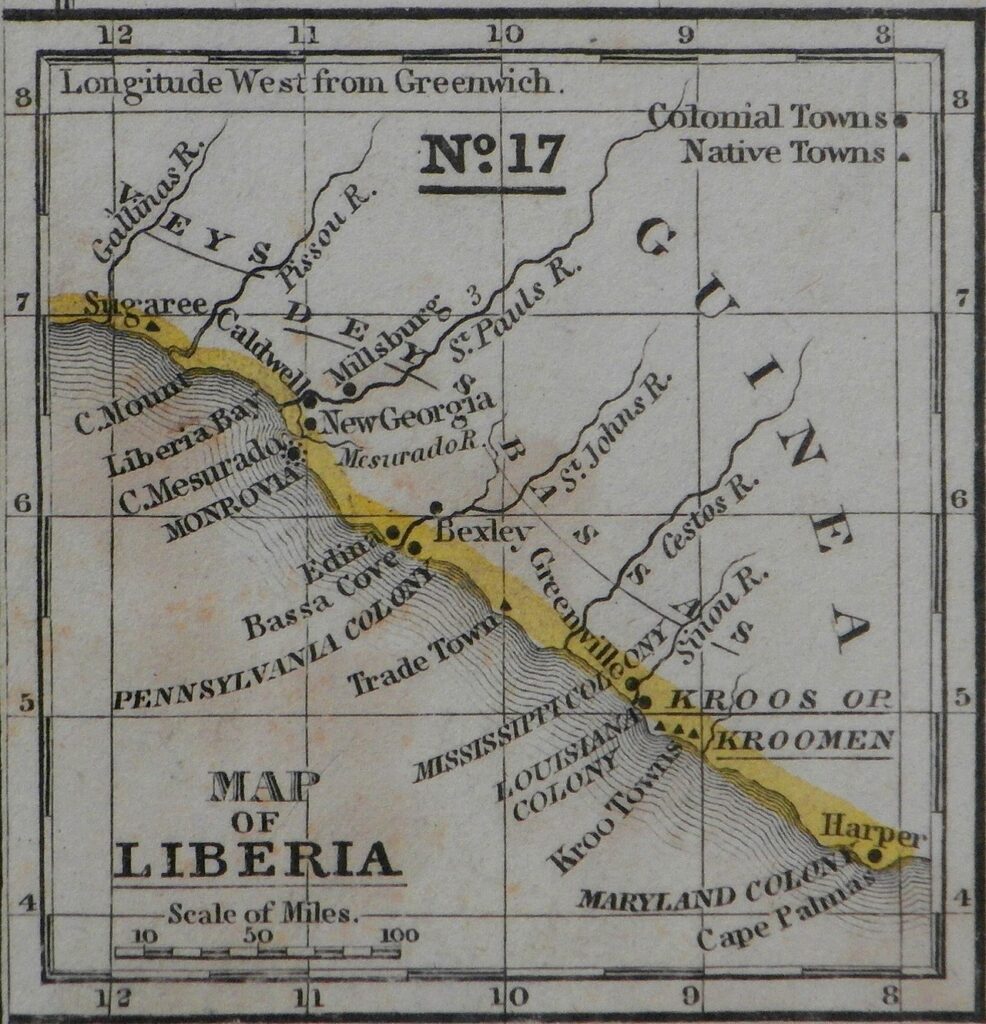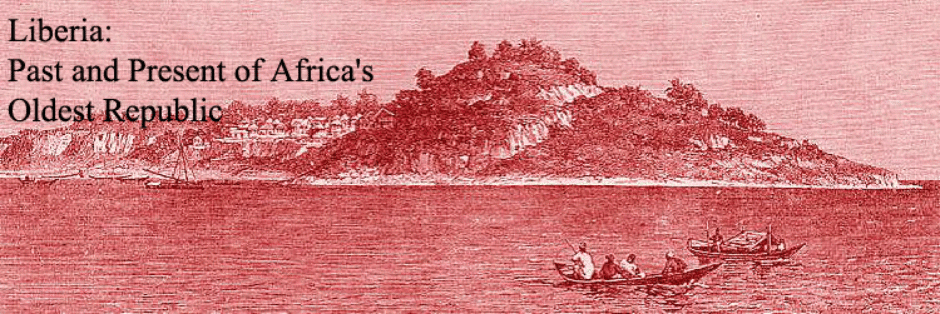Whereas the colonization activities of the American Colonization Society (ACS) have been criticized at various places and various times, it is nonetheless fair to draw here attention to an important and at times successful activity: the suppression of the slave trade in and around the American colonies.
The founders and agents of the ACS had various motives to engage in activities related to the transfer of colored and black people, freed slaves and free-born black people, ‘back to to Africa’, which constituted the prime objective of the ACS. They had political, religious, altruistic, humanitarian, not to forget racial motives, notably the removal of non-white people from the United States. The growth of the non-white population exceeded in some states the growth of the white population creating the fear that the former may one day outnumber the latter. Notwithstanding the foregoing, even though it was not a stated objective of the ACS or the auxiliary colonization societies which were created in many states, the activities of the ACS to end the heinous slave trade were and still are very commendable.
The following articles relate to the fact that still around 1840 slave traders were still active in and around the colony of Liberia and other American colonies on Africa’s west coast. The first article is from a US newspaper, the Newark Daily Advertiser, dated April 28, 1840. It describes the suppression of the slave trade by the colonial authorities. In particular, it reports the seizure of various vessels engaged in slave trading activities, one with five hundred slaves on board (!), and the failed attempt to seize a large, open boat full of slaves between Marshall and Monrovia.

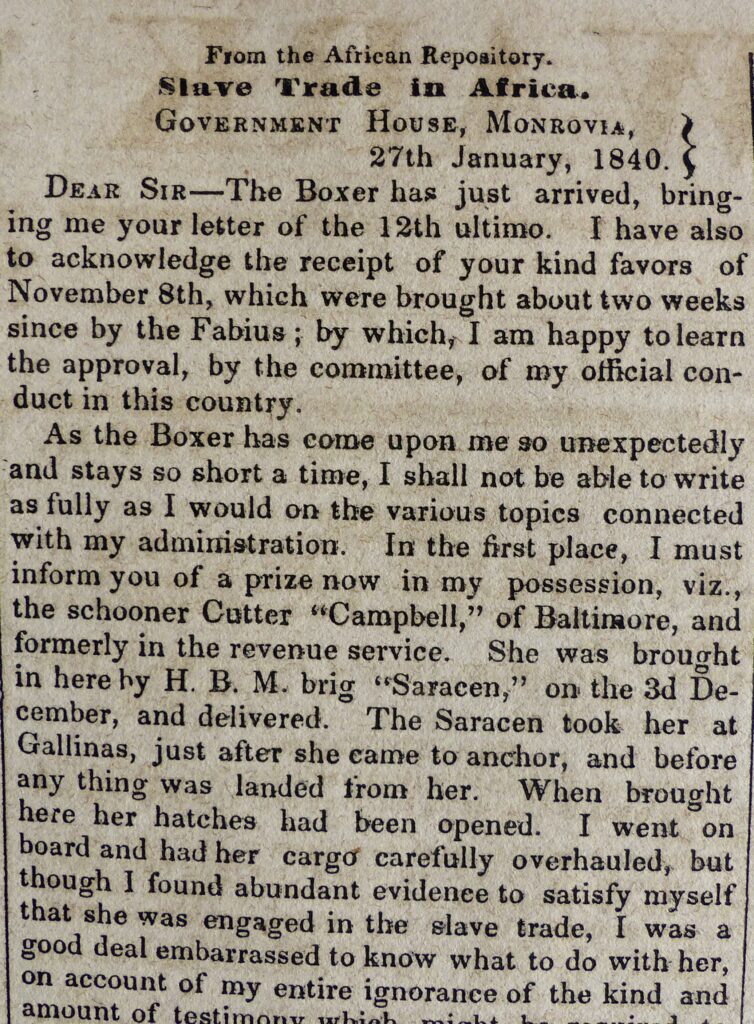
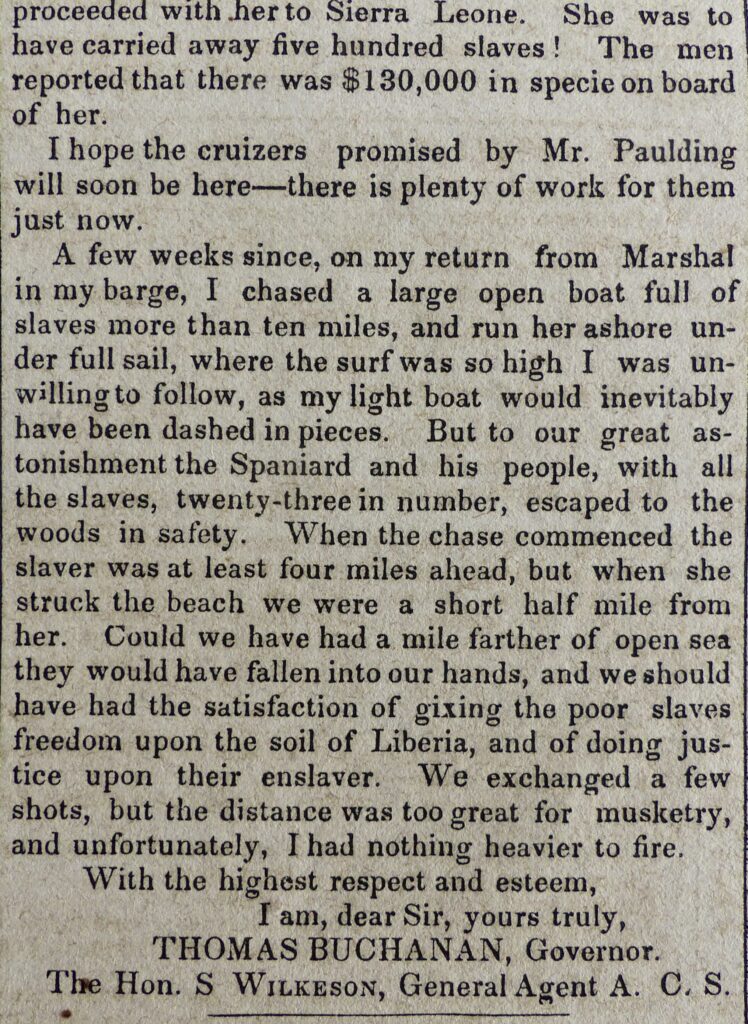
The second article is from another US newspaper, The National Gazette and Literary Register, published in Philadelphia and dated July 31, of the same year 1840. It also deals with the suppression of the slave trade in the colonies, this time not by chasing slave traders but by signing a treaty with local chiefs, some of whom were known to collaborate with slave traders.

The article contains the text a of a Treaty concluded between Governor Thomas Buchanan, of the Colony of Liberia, and several native Kings on April 6, 1840. The Kings Bromly, Brister, Peter, Willey and Mama Kenjie, as well as Governor Buchanan who signed the Treaty agreed that (a) there shall be perpetual peace between the Colony and the chiefs mentioned, and that (b) there shall be no slave trading within the jurisdiction of said chiefs, nor shall they have intercourse with those engaged in the Slave Trade.
The Treaty includes a few other agreements as well, as the following photo shows.
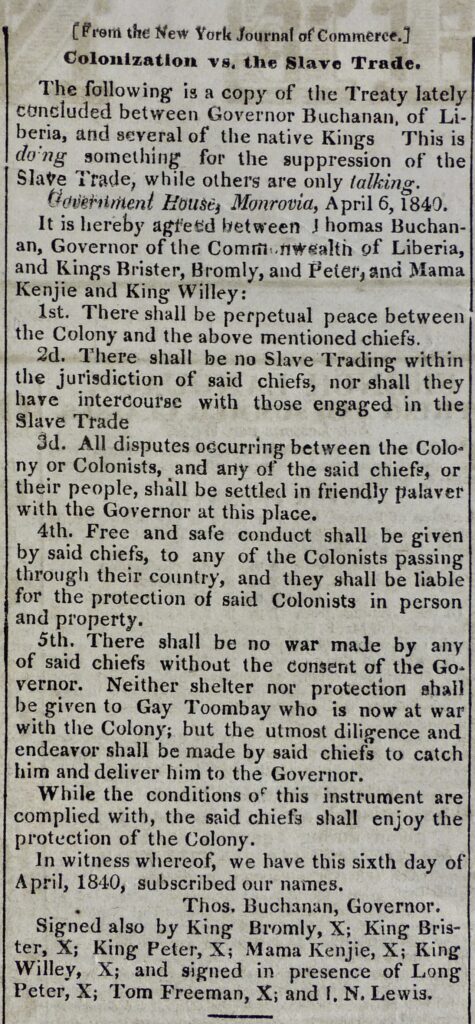
Whereas the main objective of the ACS, i.e. the transfer of African-Americans to the African continent, was not undisputed, and whereas the suppression of the slave trade was not a stated objective of the colonization society, it is nonetheless fair to draw attention to an important and at times successful activity: the fight against slave trading in and around the American colonies. It may be useful to remind the reader that between 1820 and 1840 various American colonies were created on what was then called the Pepper Coast or Grain Coast, as illustrated by the following map.
